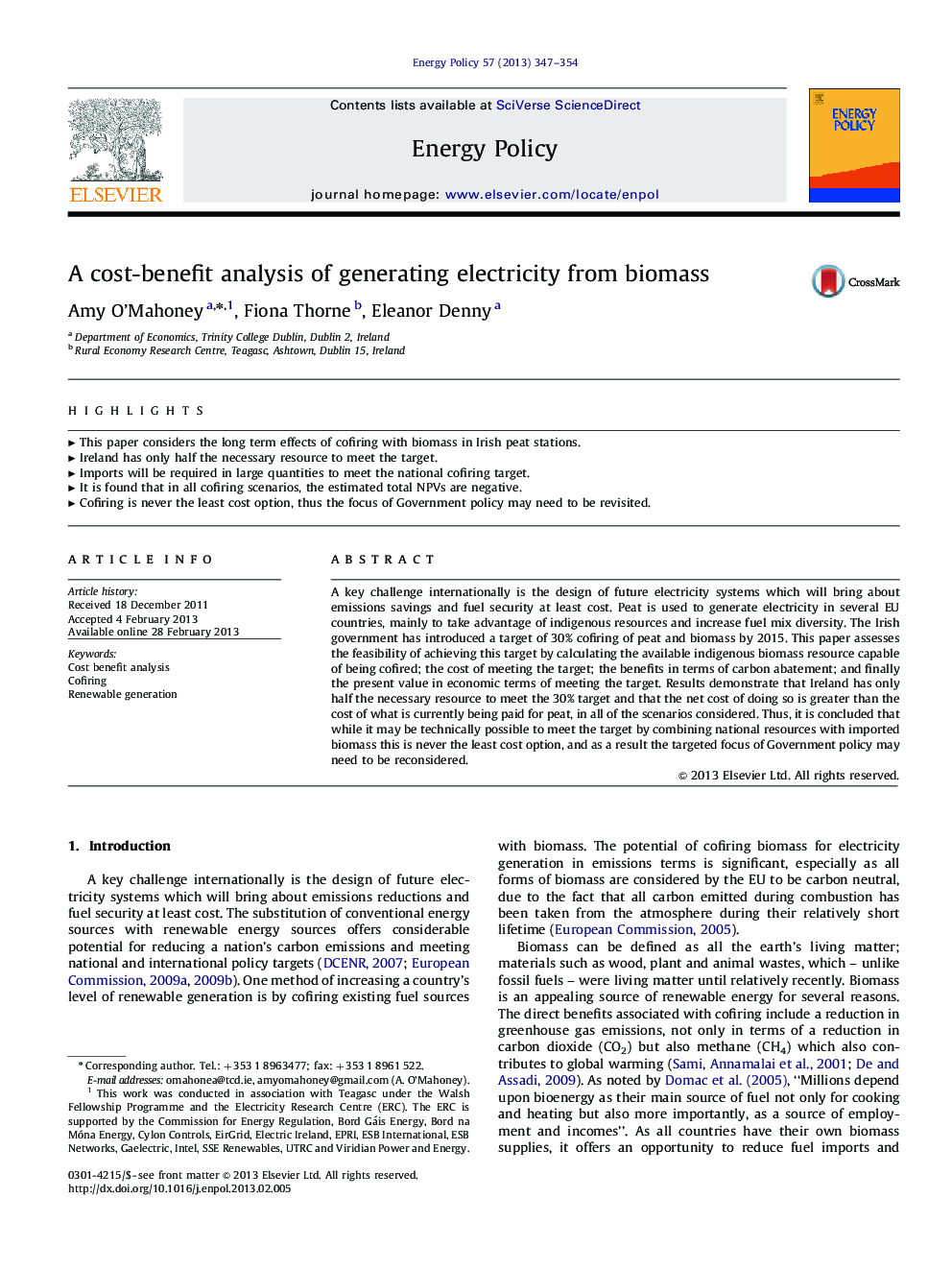| Article ID | Journal | Published Year | Pages | File Type |
|---|---|---|---|---|
| 992979 | Energy Policy | 2013 | 8 Pages |
A key challenge internationally is the design of future electricity systems which will bring about emissions savings and fuel security at least cost. Peat is used to generate electricity in several EU countries, mainly to take advantage of indigenous resources and increase fuel mix diversity. The Irish government has introduced a target of 30% cofiring of peat and biomass by 2015. This paper assesses the feasibility of achieving this target by calculating the available indigenous biomass resource capable of being cofired; the cost of meeting the target; the benefits in terms of carbon abatement; and finally the present value in economic terms of meeting the target. Results demonstrate that Ireland has only half the necessary resource to meet the 30% target and that the net cost of doing so is greater than the cost of what is currently being paid for peat, in all of the scenarios considered. Thus, it is concluded that while it may be technically possible to meet the target by combining national resources with imported biomass this is never the least cost option, and as a result the targeted focus of Government policy may need to be reconsidered.
► This paper considers the long term effects of cofiring with biomass in Irish peat stations. ► Ireland has only half the necessary resource to meet the target. ► Imports will be required in large quantities to meet the national cofiring target. ► It is found that in all cofiring scenarios, the estimated total NPVs are negative. ► Cofiring is never the least cost option, thus the focus of Government policy may need to be revisited.
